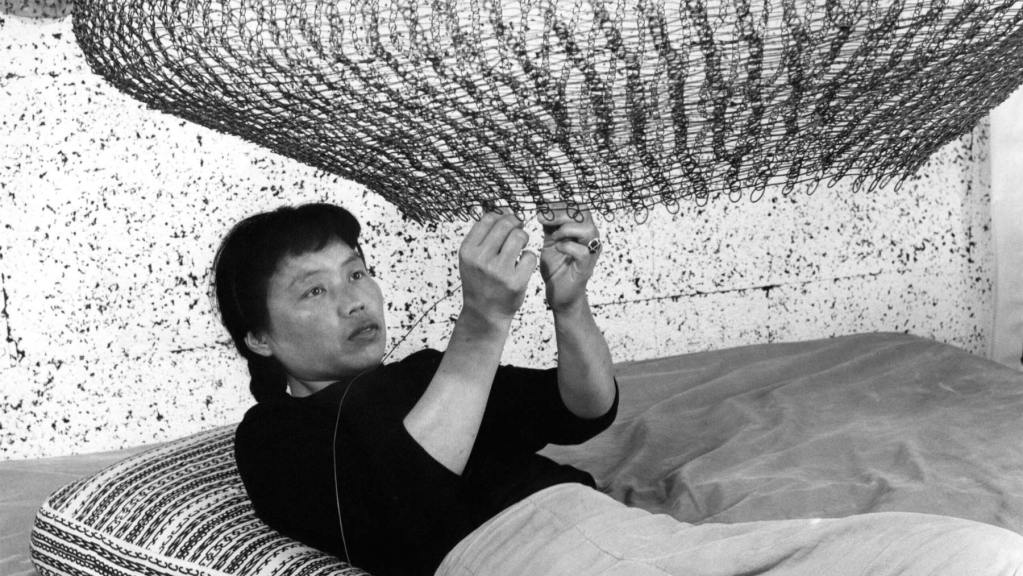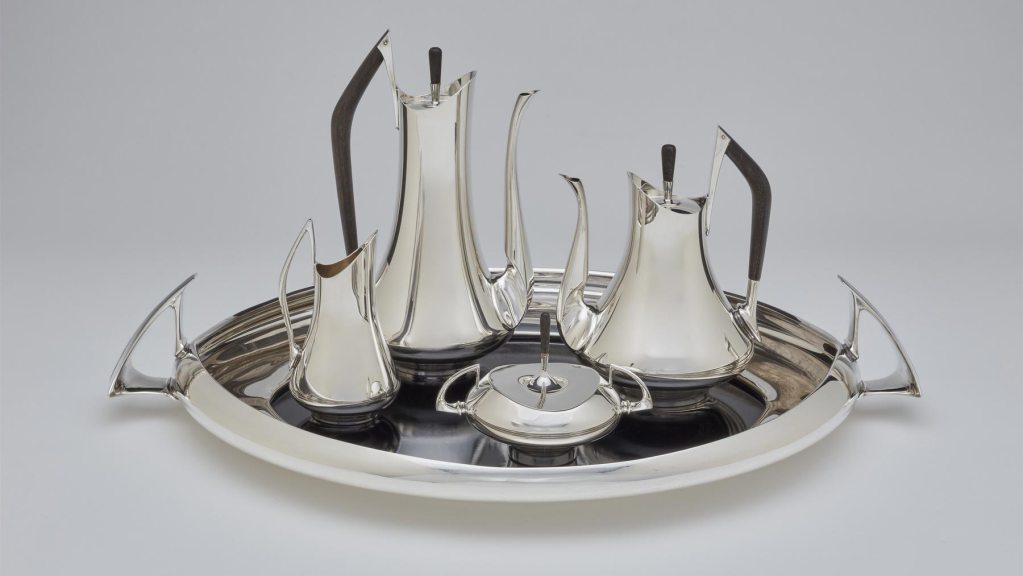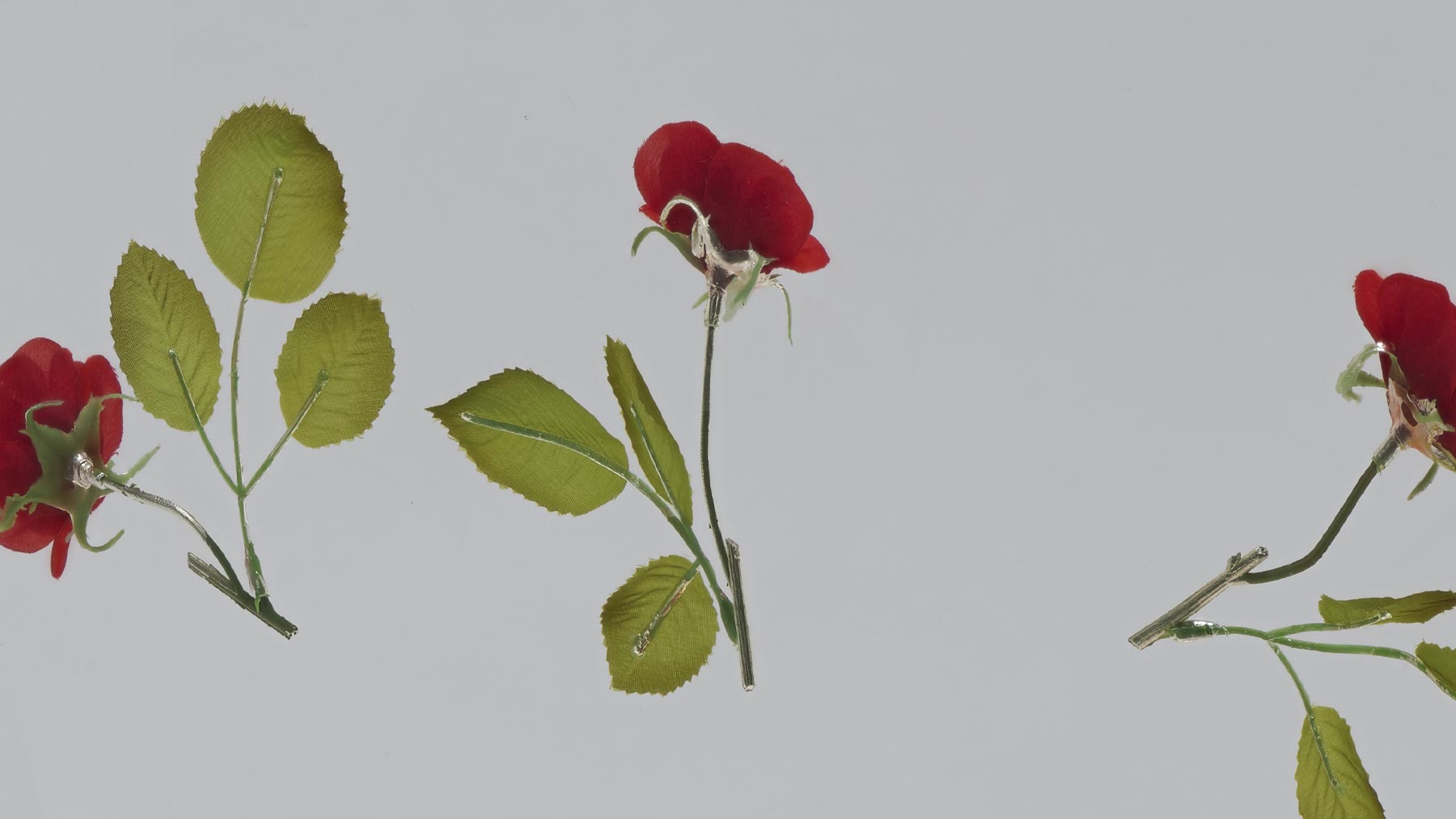
On the heels of the Milwaukee Art Museum’s annual Art in Bloom celebration, a new kind of flower is blooming in the design collection galleries: the Miss Blanche chair created by Shiro Kuramata. It is one of the final works by Kuramata, the legendary designer who brought Japanese design onto the global stage with his expressive and conceptual objects. An homage to Blanche DuBoise, the heroine of Tennessee Williams’s play A Streetcar Named Desire, the chair exemplifies his poetic approach to the everyday and his longstanding engagement with materiality. Its presence in the galleries expands the Museum’s narratives around Japanese design and provides a new, exciting context to the beloved Carlton bookcase by Ettore Sottsass.
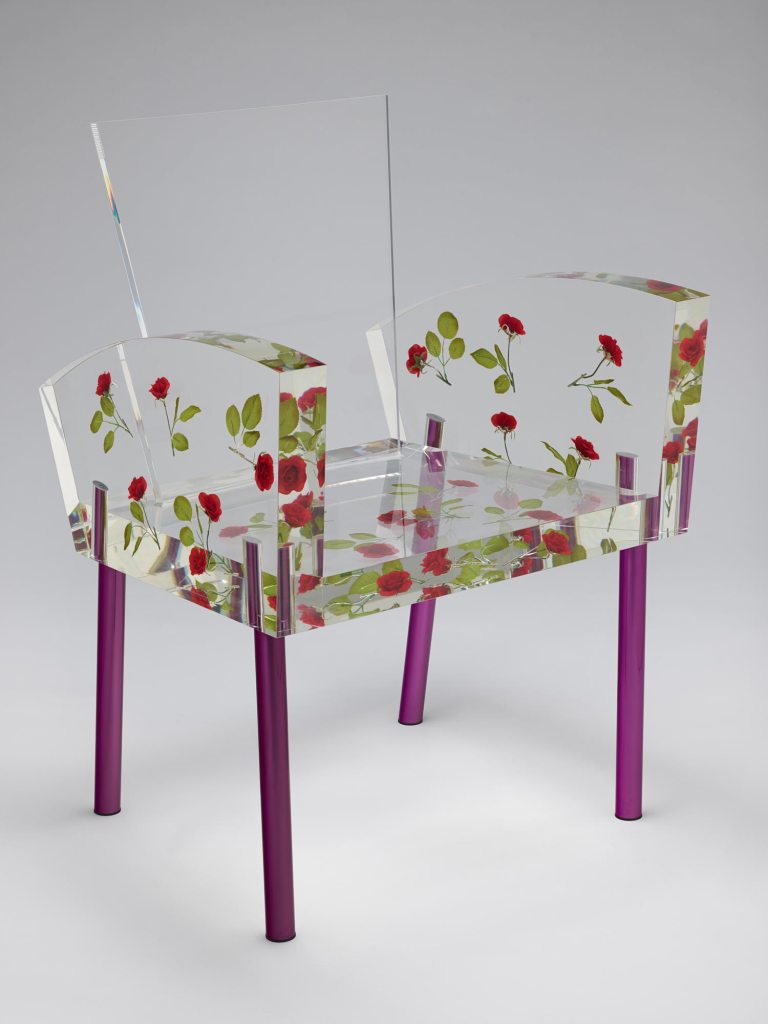
Born in Tokyo in 1934, Shiro Kuramata studied architecture and then trained as a cabinet maker at Kuwasawa Institute of Design. He worked for a decade in various furniture companies before establishing his own studio in 1965, at the age of 31. He worked closely with the architect Tadao Ando early in both their careers and collaborated with the radical artistic collective Hi-Red Center. His most important early partnership was with fashion designer Issey Miyake, whose dynamic retail spaces—designed by Kuramata—helped to promote Miyake’s clothes around the globe. Miyake later described Kuramata’s impact on his own work: “Japanese design is tight and rational, and has no unnecessary elements. But Kuramata’s work was filled with mystery; a world that we are not ordinarily capable of expressing. My work might have been different had I never met him.”
Kuramata turned his traditional training and keen eye for craftsmanship to unexpected, unapologetically modern materials such as aluminum, acrylic, and steel—materials that reflected the postwar Japanese built environment, economy, and culture. He applied these unconventional materials in pursuit of emotional, evocative, and impossible furniture.
One of his last works, Miss Blanche exemplifies Kuramata’s insistence that furniture has a role beyond utility. As he explained it, “the function of design should not be just about whether it is practical or not. Enchantment should also be considered as function.” That enchantment comes through in the paradoxes of the chair: cut flowers are inherently fleeting, yet the chair’s artificial materials (plastic flowers and acrylic) are everlasting. Those same materials also convey a sense of weightlessness: the flowers float within a barely-there body, when in reality they are trapped inside a weighty shell.
The production of a single Miss Blanche chair was intensive. Studio technicians poured liquid acrylic into custom molds. When the mold was half-filled, they would pause, place the flowers, and hold them in place with tweezers to prevent them from sinking as they waited for the acrylic to harden. When the flowers were fixed in place, the second batch of acrylic was poured, filling the mold to the top. This painstaking process reflected Kuramata’s attention to detail and deep respect for production and material.
Miss Blanche takes its name from Blanche DuBois, the main character of Tennessee William’s play, A Streetcar Named Desire. The chair and the character share an artifice—the chair, with its perfection achieved only through inorganic materials, and DuBois, who lies about her life and personal history to a prospective suitor to stave off poverty and regain her social status. Kuramata was particularly drawn to director Elia Kazan’s 1951 film version, and the costume designer’s use of crumpled fabric flowers as decoration on Blanche’s dress—presaging Miss Blanche’s own fake flowers.
Kuramata designed Miss Blanche for Tokyo Designer’s Week at Axis Gallery Annex in 1988 and showed it again in Paris a year later at Galerie Yves Gastou. The chair went into limited production that same year. Kuramata died just two years later in 1991, and the studio made the appropriately poetic decision to limit production of Miss Blanche, his final work, to 56 chairs—the same number of years that Kuramata lived.
A new acquisition, Miss Blanche has found an immediate home in gallery K117 next to the Museum’s Carlton bookcase. Ettore Sottsass, who designed the bookcase in 1981, was a founder of the Memphis Group, a collective that pioneered postmodern design and challenged the established orthodoxy of modernism. Rejecting both the philosophy and aesthetics of modern design, Sottsass produced work suffused with humor and irreverence. Kuramata and Sottsass met in 1981 and quickly became friends, bonding over their frustrations with the constraints of modern design. Though their approach and final products differed dramatically, the two designers shared the belief that design could transcend function and utility to embrace emotion, narrative, and even poetry. Kuramata described Sottsass as his maestro, and it is a delight to see works by these two transformative designers in conversation at the Museum.
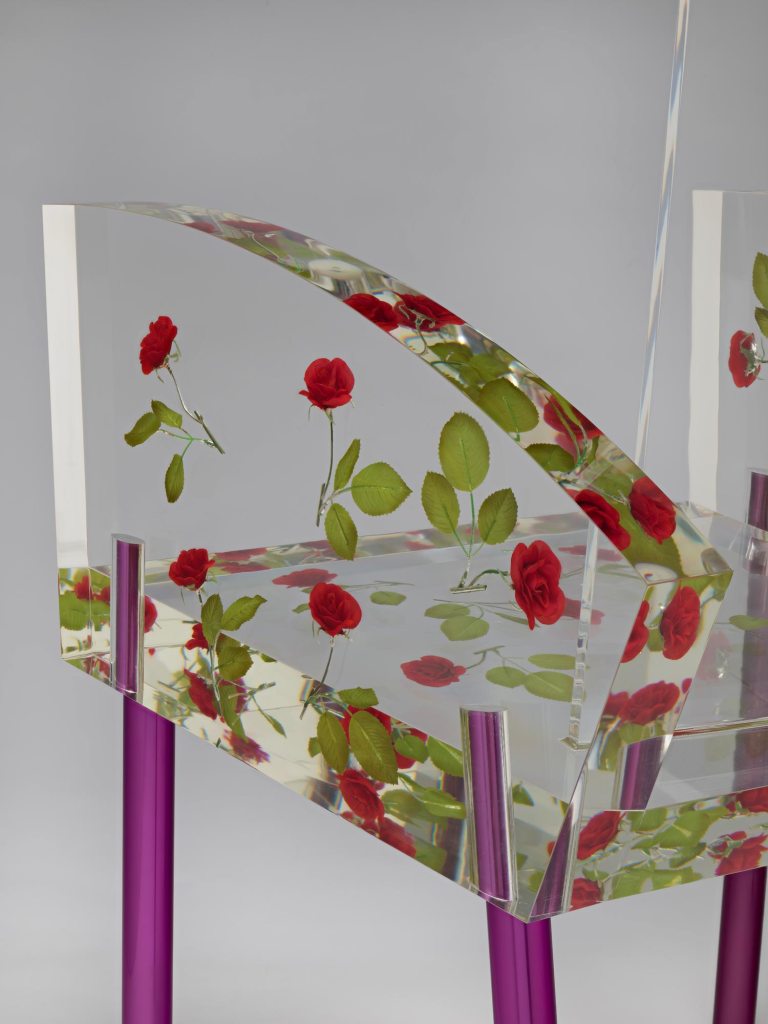
Want to learn more about the Museum’s 20th-and 21st-century design collection? Continue your exploration by reading A Closer Look: Ruth Asawa’s Milwaukee Connection and 20th-Century Silver: An Unexpected Medium for Modernism. To encounter these and many other distinctive examples of design, visit the ever-changing galleries filled with objects spanning the Arts and Crafts movement to Postmodernism and beyond.
Continue reading

Shoshana Resnikoff is the Demmer Curator of 20th and 21st Century Design and oversees the research, exhibition, and acquisition of modern and contemporary design for the collection.
Image:
1. Shiro Kuramata (Japan, 1934–1991), Miss Blanche (detail), designed 1988. Acrylic, plastic flowers, and anodized aluminum. Museum purchase, with funds from Kaiser Fund and Demmer + Goisman Foundation, TR2024.1.16.Shiro Kuramata (Japan, 1934–1991), Miss Blanche, designed 1988. Acrylic, plastic flowers, and anodized aluminum. Museum purchase, with funds from Kaiser Fund and Demmer + Goisman Foundation, TR2024.1.16.
2. Shiro Kuramata (Japan, 1934–1991), Miss Blanche, designed 1988. Acrylic, plastic flowers, and anodized aluminum. Museum purchase, with funds from Kaiser Fund and Demmer + Goisman Foundation, TR2024.1.16.Shiro Kuramata (Japan, 1934–1991), Miss Blanche, designed 1988. Acrylic, plastic flowers, and anodized aluminum. Museum purchase, with funds from Kaiser Fund and Demmer + Goisman Foundation, TR2024.1.16.
3. Miss Blanche, detail.

